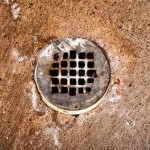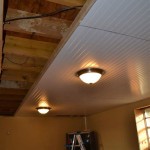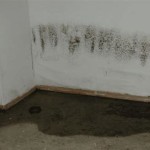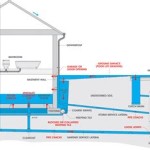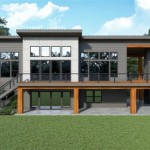Finishing a Basement with a Sump Pump: A Comprehensive Guide
Finishing a basement can significantly increase a property's living space and overall value. However, basements are inherently prone to moisture issues due to their location partially or completely underground. In many homes, a sump pump is installed to mitigate the risk of flooding by actively removing groundwater that accumulates around the foundation. When finishing a basement that includes a sump pump, careful planning and execution are essential to ensure long-term comfort, safety, and structural integrity.
Successfully incorporating a sump pump into a finished basement requires addressing several critical aspects. These include proper sump pump maintenance and accessibility, moisture management strategies, and adherence to building codes and regulations. Neglecting any of these areas can lead to problems such as water damage, mold growth, and costly repairs down the road.
Sump Pump Maintenance and Accessibility
A crucial aspect of finishing a basement with a sump pump is ensuring its ongoing maintenance and easy accessibility once the space is completed. The sump pump is a mechanical device, and like any machine, it requires periodic inspection and maintenance to function effectively. Burying or completely concealing the sump pump can make these tasks significantly more difficult and potentially lead to serious issues if the pump fails without warning.
Ideally, the sump pump should be housed in a sump pit that is easily accessible. This can be achieved by installing an access panel or hatch that allows for visual inspection of the pump and surrounding area. The access panel should be large enough to allow for the pump to be removed and replaced if necessary. The area surrounding the sump pit should be kept clear of obstructions to allow for easy access and cleaning.
Regular maintenance should include checking the pump's float switch for proper operation. This switch activates the pump when the water level in the sump pit rises to a certain point. Debris or obstructions can interfere with the float switch, preventing the pump from turning on when needed. The discharge pipe, which carries water away from the house, should also be inspected for clogs or damage. A frozen or blocked discharge pipe can cause the pump to back up and potentially flood the basement.
It is also recommended to have a backup power source for the sump pump. Power outages can occur during heavy rain or storms, which are precisely the times when the sump pump is needed most. A battery backup system or a generator can provide a reliable source of power to keep the pump running until the main power is restored.
Furthermore, consider the noise generated by the sump pump. Some models can be quite loud when operating. To minimize noise, the sump pump can be enclosed in a sound-dampening enclosure. Ensure the enclosure still allows for adequate ventilation to prevent the pump from overheating.
Moisture Management Strategies
Addressing moisture issues is paramount when finishing a basement, especially one with a sump pump. The sump pump effectively removes accumulated groundwater, but it does not address other potential sources of moisture, such as condensation, leaks, or rising damp. Implementing a comprehensive moisture management strategy is essential to prevent mold growth, structural damage, and unhealthy living conditions.
One of the first steps in moisture management is to properly waterproof the basement walls and floor. This can be achieved by applying a waterproof sealant to the interior or exterior surfaces. Exterior waterproofing is typically more effective as it prevents water from entering the foundation in the first place. However, it is also a more involved and expensive process.
Interior waterproofing can be accomplished using specialized paints or coatings that create a waterproof barrier. These products are designed to withstand the hydrostatic pressure of groundwater and prevent moisture from seeping through the walls. It is important to follow the manufacturer's instructions carefully when applying these coatings to ensure they are effective.
In addition to waterproofing, proper ventilation is crucial for controlling moisture levels in the basement. A dehumidifier can be used to remove excess moisture from the air, preventing condensation and mold growth. The size and capacity of the dehumidifier should be appropriate for the size of the basement. Regular monitoring of humidity levels is recommended to ensure the dehumidifier is functioning effectively.
Consider installing a vapor barrier beneath the flooring. This barrier prevents moisture from rising through the concrete slab and damaging the flooring material. A vapor barrier is typically made of polyethylene plastic and should be installed before any flooring is installed.
Addressing any existing leaks is also essential. Check for cracks in the foundation walls or floor and seal them with appropriate sealant. Inspect plumbing fixtures and pipes for leaks and repair them promptly. A leaky faucet or pipe can contribute significantly to moisture problems in the basement.
Grading around the foundation should be sloped away from the house to prevent water from pooling near the foundation. Gutters and downspouts should be properly maintained to direct rainwater away from the house. Extend downspouts if necessary to ensure water is discharged a sufficient distance from the foundation.
Building Codes and Regulations
Before commencing any basement finishing project, it is imperative to familiarize oneself with local building codes and regulations. These codes are designed to ensure the safety and habitability of the finished space. Failure to comply with building codes can result in fines, delays, and even the need to undo completed work.
Many building codes require a minimum ceiling height for habitable rooms. This height is typically around 7 feet, but it can vary depending on the location. If the basement ceiling is too low, it may not be possible to legally finish the space as a living area. The presence of ducts, pipes, or other obstructions can also affect the usable ceiling height.
Egress windows are another common requirement for finished basements. An egress window is a window that is large enough to allow occupants to escape in the event of a fire or other emergency. The window must meet specific size and accessibility requirements to be considered an egress window. If the basement does not already have egress windows, they may need to be installed as part of the finishing project.
Electrical wiring in a finished basement must comply with local electrical codes. This typically includes using grounded outlets, installing GFCI (ground fault circuit interrupter) outlets in wet areas, and ensuring that all wiring is properly protected. It is recommended to hire a qualified electrician to handle any electrical work in the basement.
Plumbing work in a finished basement must also comply with local plumbing codes. This includes proper drainage for sinks, toilets, and showers. A backwater valve may be required to prevent sewage from backing up into the basement in the event of a sewer backup. A licensed plumber should be consulted for any plumbing work.
Fire safety is a major concern in finished basements. Smoke detectors are typically required in all bedrooms and hallways. A carbon monoxide detector may also be required, especially if there are fuel-burning appliances in the basement. Fire-resistant materials should be used whenever possible to help slow the spread of fire.
The location of the sump pump can also be subject to building code requirements. The sump pit may need to be covered with a sealed lid to prevent radon gas from entering the basement. The discharge pipe must be properly routed to prevent water from flowing back towards the foundation.
Obtaining the necessary permits before starting any work is crucial. This ensures that the project is inspected by local authorities and that it complies with all applicable codes. A building inspector can identify potential problems and ensure that the finished basement is safe and habitable.
In addition to general building codes, there may be specific regulations regarding basements in certain areas. For example, some areas may have restrictions on the types of materials that can be used in basements due to concerns about moisture or mold. It is important to research these regulations before starting any work.

Clever Sump Pump Cover Ideas Basements Plus

Basement Finishing Remodeled Home Gym In Ville Oh Hiding Sump Pump

Hiding A Sump Pump Hide Basements Cabinet Pumps Basement Ideas Baseme Bathroom Design Finishing

How To Hide Your Sump Pump Hole

Why Doesn T My Basement Have A Sump Pump Avalon Home Inspections

Basement Finishing Complete In Pelican Rapids Mn Sump Pump Location After

Start Your Basement Finishing Project Cleanspace Northwest News And Events For

Sump Pump Features Parts Basement Systems

Brenneco Plumbing Backup Sump Pumps

Basement Waterproofing Quality 1st Renews Westfield Finished With New Flooring Sump Pump
Related Posts
